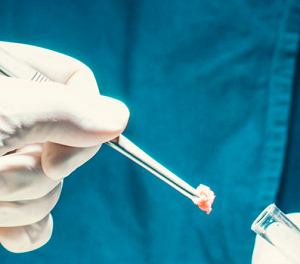Sentinel Lymph Node Biopsy Procedure, Recovery, Complications
Sentinel lymph nodes are an essential component of the immune system. These lymph nodes contain the cells that are responsible for detecting and eliminating foreign products, such as cancer, germs, and viruses. With the aid of sentinel lymph node mapping, the lymph nodes with the highest potential for possessing cancer can be pinpointed and removed.
An SLNB, or sentinel lymph node biopsy, is a surgical procedure in which the sentinel lymph node is located and removed to ascertain whether or not cancer has spread, and if spread, to what extent.
If the result of the sentinel lymph node biopsy is negative then it indicates that the malignancy has not spread in the majority of cases. A positive lymph node biopsy indicates the presence of malignancy. There is a possibility that cancer has spread to additional lymph nodes or perhaps to other organs.
Procedure
One day before or the day of surgery, a chemical known as a "tracer" is injected into the breast. The tracer could be a low-dose radioactive substance, blue dye, magnetic material, or fluorescent substance. Multiple tracers can be utilized if necessary. After injection, the tracer flows to the armpit lymph nodes. The tracer follows exactly the same course through the lymphatics that cancer cells would follow if they were to enter the lymph system. Tracer-containing lymph nodes are identified using a detector. This does not mean that there is cancer present; rather, it tells the surgeon which lymph nodes need to be removed for testing. The surgeon can see blue dye if it is used. The removal of sentinel nodes typically ranges from one to four. The lymph nodes are then taken for an examination under the microscope by the pathologist.

If cancer cells are discovered during a biopsy (resulting in a "positive" result), the surgeon may choose to remove any remaining lymph nodes from the affected location. Additional testing will be required to establish whether cancer has progressed beyond the lymph nodes. In other instances, doctors may choose to use radiation therapy, chemotherapy, and other cancer treatments instead of removing all remaining lymph nodes, or they may decide to keep an eye on the condition of the remaining lymph nodes. Physical examinations, imaging analyses, and other examinations may be used in monitoring.
Recovery
When compared to a lumpectomy or mastectomy, some individuals believe that the sentinel node surgery causes more discomfort. This is typically treated with ice or over-the-counter pain relievers, but prescription pain medication is frequently required for at least a few days. It's typical to experience numbness in the upper arm and underarm. It is rare to get an infection or bleed.
Complications
Surgery is used to perform a sentinel lymph node biopsy (SLNB) to assess whether cancer has progressed to the lymph nodes. Despite being a generally safe surgery, there are some potential issues that could happen, such as:
Infection
There is a danger of infection with every surgical procedure. Lymph nodes and the area around the incision are both potential infection spots.
Lymphedema
Lymphedema is a condition in which excess fluid builds up in the body's tissues, leading to swelling. During surgery, if the lymphatic vessels are injured, this condition may develop as a result.
Damage to the nerves
In order to find the sentinel lymph node, SLNB uses a tracer or dye. These drugs can occasionally harm nerves when they are injected.
Bleeding
The incision site may bleed as a result of SLNB. Rarely, it might cause serious bleeding that needs extra care.
An allergic response
The dye or tracer used during the procedure may cause an allergic reaction in particular individuals. A mild to severe allergic reaction may result from this.
Pain or discomfort
The incision site may experience pain or discomfort as a result of SLNB. In most cases, this is not severe and can be treated with over-the-counter pain relievers.
 Reviewed by Simon Albert
on
April 20, 2023
Rating:
Reviewed by Simon Albert
on
April 20, 2023
Rating:











